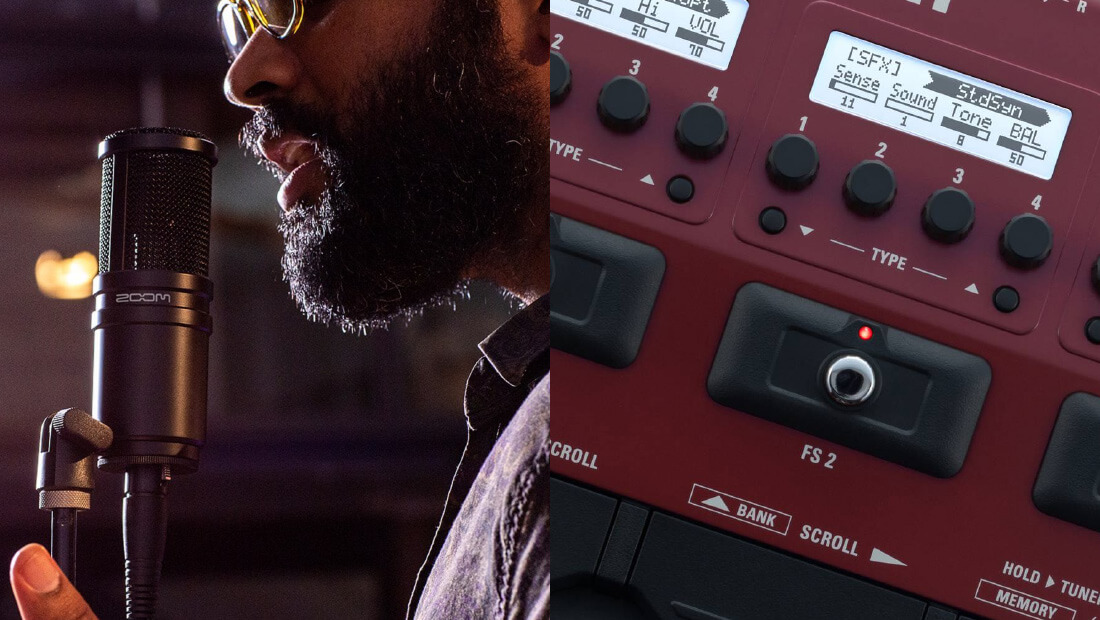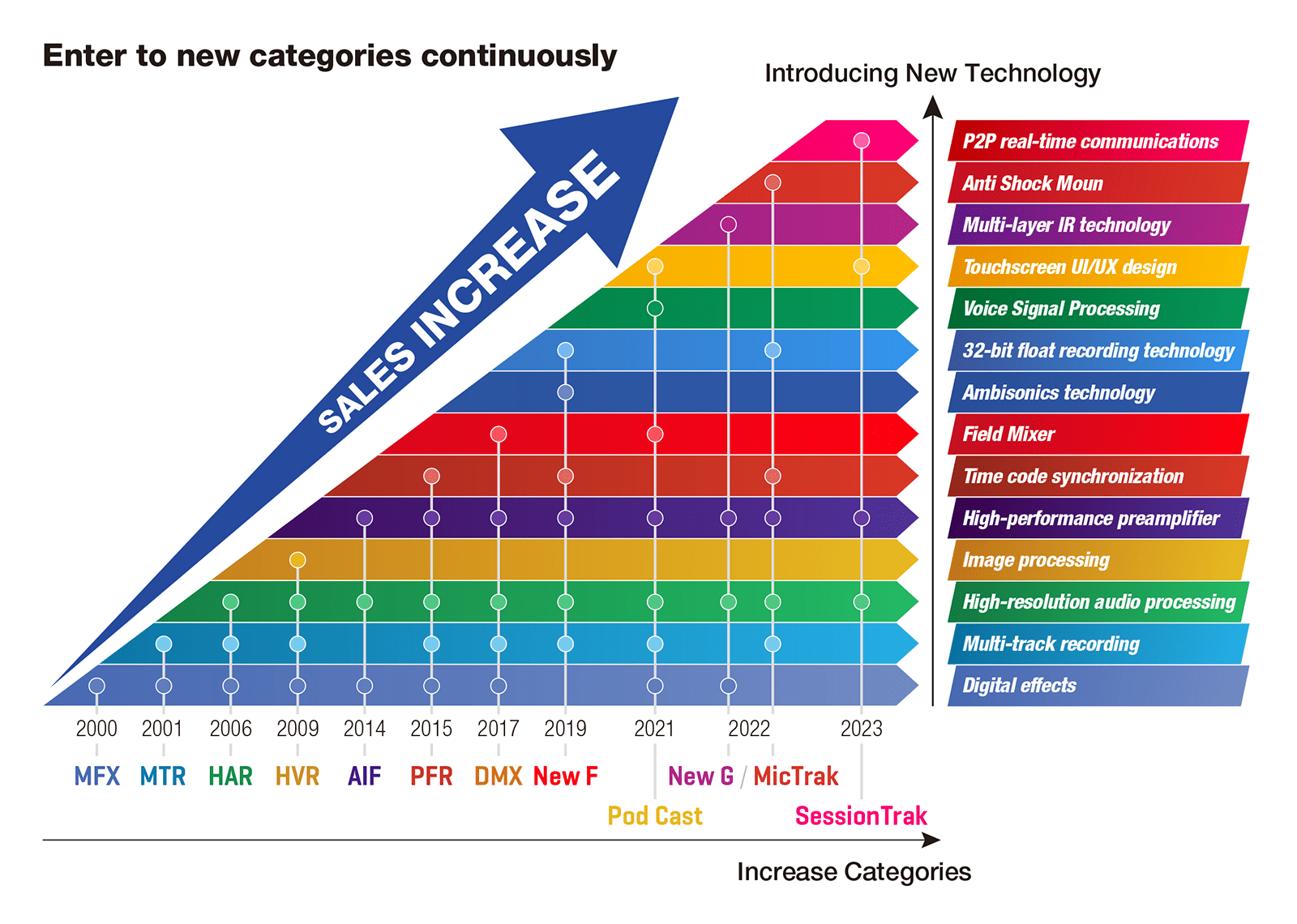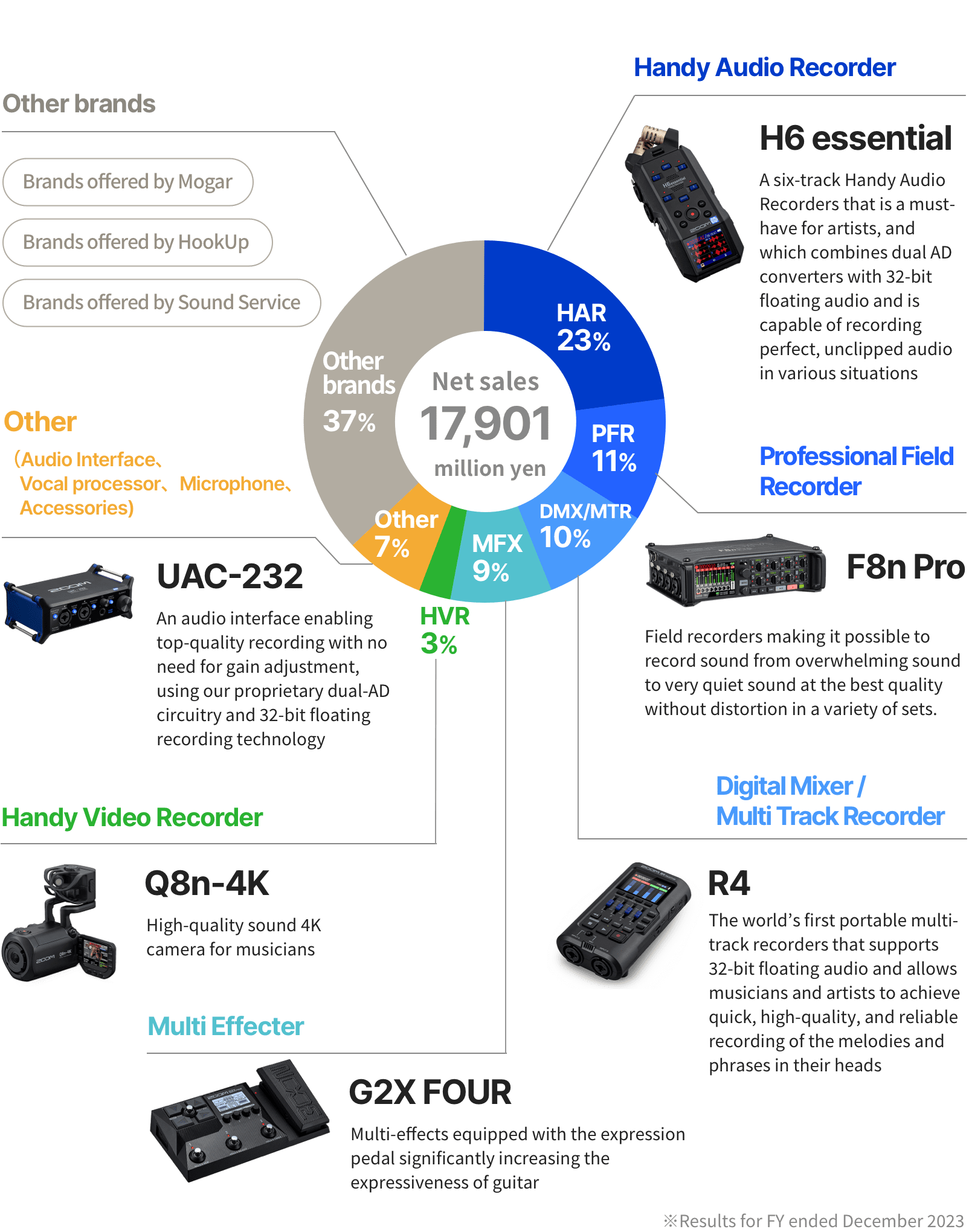Investor Relations
Business Strategy
Business Model

Business development specialized in "sound" and "music"
We are a global company selling creative audio equipment and services developed with a wide range of customers in mind, from beginners to professionals, in approximately 130 countries.
Our Head Company in Japan specializes in product development and marketing, while overseas sales are handled by our Group companies and distributors. Furthermore, having no factories of our own, we have established a fabless system wherein production is outsourced to overseas EMS companies*1.
The target market for our products is creators from all over the world who are passionate about "sound." While the size of this creator market is such that it is difficult for large companies to enter it and make profits, it is a market that is expected to grow in the future.
Being a fabless company with a low fixed cost ratio, our goal is to develop the sound & music-related creator market and expand our business while increasing our user base by focusing our management resources on product development.
- EMS companies: EMS stands for Electronics Manufacturing Services ; an EMS company is a company that is entrusted with the contract manufacturing of electronic devices.


Global development, production and sales systems (strengths)
Development system
Our products are designed and developed by engineers who account for approximately half of our employees, most of whom have extensive experience in producing music, playing musical instruments and making videos. What enables them to contribute value that differentiates us from other companies are a global perspective acquired from collaborating with overseas sales subsidiaries to understand trends among creators, an end-user perspective based on their own experience, as well as advanced technological capabilities developed over many years in the field of ‘sound technology', mostly related to digital signal processing, that allow them to incorporate some ‘world's first’ features in terms of functionality, performance, price, appearance and operability.
Product development is carried out speedily thanks to an organizational structure that includes the top management and that allows for quick decisions, so that it takes less than a year from product planning to mass production. And while this is taking place, our specialized teams are also working on developing new technologies for the future.
Production system
We operate based on a fabless model wherein we have no factories of our own and production is outsourced to EMS companies in China and Southeast Asia. In order to ensure creator satisfaction, we have set as our goal a defect rate of less than 0.1%, and quality control at factories is carried out based on our own very strict standards.
Sales system
Our products are sold to overseas import and sales agents, including our own subsidiaries, who then resell them to retailers (musical instrument stores, commercial equipment stores, home electronics stores, online retailers, etc.) in each region. Using common advertising contents and slogans for branding and marketing across all countries allows us to present a unified image of high quality, regardless of country or region.
Sales composition by region

Approximately 80% of our products are sold overseas, and our brand is more widespread abroad than in Japan. Our largest zoom prodcts market is the United States,but since Sound Service Group became a consolidated subsidiary in January 2023, with 37% of sales going to Central Europe (including Germany, the Benelux countries, Austria, Poland, the Czech Republic, Slovakia, the Baltic countries, etc.). It is followed by North America with 24%, Japan with 17%, Southern Europe (including Italy, France, Spain, Portugal, etc.) with 14%.
Sales composition ratio by product category

Although our single business segment is music-related electronic equipment, our product categories are diversified to meet the different needs of artists and creators.
Growth strategy
The "∞" at the center of our logo is the symbol of infinity. Just like "∞", our Company reconciles sets of two seemingly contradictory cycles into a circular shape. Such infinity cycles allow us to further enhance our strengths and make ourselves unique, thus achieving sustainable growth.
Connecting the "exploitation of knowledge" and the "exploration of knowledge" cycles
Integrating the cycle of "exploitation of knowledge" constantly evolving our main business, and the cycle of "exploration of knowledge" taking on new technologies, enables us to develop new fields by combining existing and new technologies.
Connecting the "product-out thinking" and "market-in thinking" cycles
While proposing products based on one's own experience may lead to the creation of products that are not yet available on the market, it may also result in proposals that are self-centered. On the other hand, proposing products that are meant to tackle particular market issues makes it difficult to differentiate one’s products from those of other companies. Integrating these two cycles enables us to come up with challenging and innovative product planning while grasping the essence of creators' needs.
Connecting the "market leader strategy" and "niche strategy" cycles
There are two sides to our Company: we are both a top player in the field of recording equipment for creators and, in areas other than recording equipment, a challenger who strives to create needs by responding to niche needs. Integrating these two cycles that are unique to our Company allows us to play the unique role of a top player who continues to take on challenges and of a niche player who grasps the broad framework of the market and expands the market.




